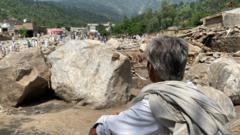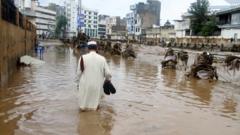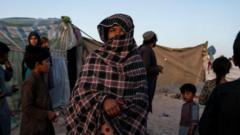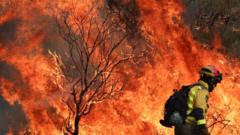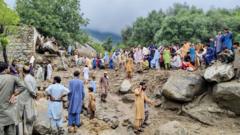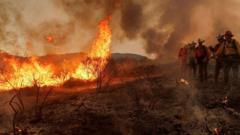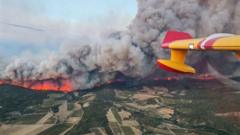The recent monsoon floods in Pakistan have led to significant casualties, with over 200 individuals missing in Buner district and many areas declared disaster zones. As rescue efforts continue, the rising death toll highlights the increasing intensity of climate-related disasters in the region.
Over 200 Missing in Buner District Amidst Catastrophic Pakistan Floods
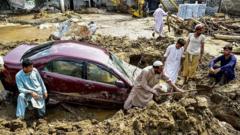
Over 200 Missing in Buner District Amidst Catastrophic Pakistan Floods
Devastating floods have resulted in over 200 individuals reported missing in Buner district, Pakistan, following severe monsoon rains that have claimed more than 300 lives.
More than 200 people remain unaccounted for in Buner district, northwest Pakistan, following severe flooding and landslides that have wreaked havoc across the region, according to local officials. In the latest reports, the death toll from the devastating monsoon rains has surpassed 300, impacting both Pakistan and Pakistan-administered Kashmir, with the majority of fatalities occurring in the mountainous province of Khyber Pakhtunkhwa.
Jehangir Khan, a spokesperson from the deputy commissioner’s office in Buner, informed the BBC that at least 209 individuals are still missing, raising concerns that this figure may increase. Tragically, rescue teams have reported burying eight bodies of unidentified victims, as no relatives could be located to claim them. Road damage due to floods has hindered relatives' abilities to identify and claim the remains of their loved ones.
Provincial rescue services reported partial destruction of "10 to 12 entire villages," with numerous individuals also unaccounted for in the Shangla district, as stated by Asfandyar Khattak, the head of the provincial disaster management authority.
The monsoon season, which spans from June to September, accounts for approximately 75% of South Asia's annual rainfall. Although landslides and flooding are not uncommon, scientists assert that climate change is amplifying the severity and frequency of such weather extremes. Alongside the chaos in Pakistan, torrential rainfall has similarly impacted Indian-administered Kashmir, with previous flash floods having claimed 60 lives.
In recent reports, nine deaths from floods have been noted in Pakistan-administered Kashmir, coupled with five fatalities in the northern Gilgit-Baltistan region. Government officials anticipate continued heavy rainfall until August 21 in the north-west, where several areas have been declared disaster zones.
Pakistan's struggle with monsoon-induced disasters has escalated this year, with at least 650 reported deaths since June. The Punjab region, home to nearly half of the nation's population, recorded a staggering 73% increase in rainfall compared to the previous year, leading to more deaths than in the entire preceding monsoon season.
Northern Pakistan, renowned for its glacial areas, is facing dramatic changes as climate change accelerates the melting of glaciers. This phenomenon is contributing to increased stability issues in mountain terrains, raising the risk of landslides that can obstruct rivers. While investigations into the specific causes of the recent flooding and landslides continue, experts have noted that glacial melting is a significant factor contributing to these disasters.

